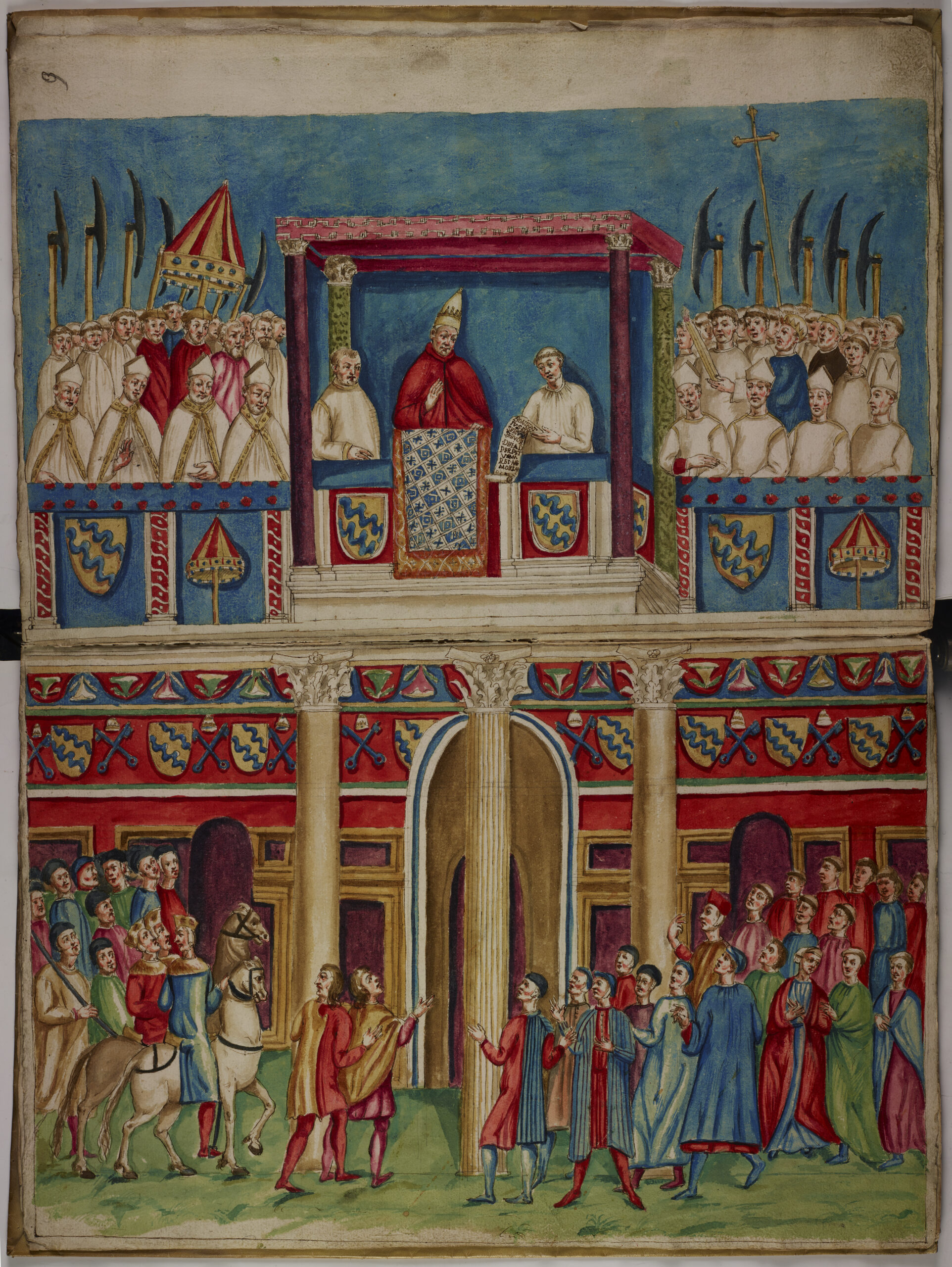Pinacoteca
DECEMBER 7: SPECIAL EVENING OPENING
From 18.00 to 19.30 (last admission) entrance to the Art Gallery and Crypt at the special price of €3.00
From December 19, 2024 to June 17, 2025 visitors can admire the exhibition “Jubilee 2025 – XVII Centenary of the Council of Nicaea” curated by Mons. Marco Navoni and Mons. Francesco Braschi in rooms 2 and 3 of the Pinacoteca.
The exhibition is divided into two closely connected sections in which works from the Ambrosiana Library and not normally visible to the public are displayed.
Jubilee
Towards the end of 1299, the impression began to circulate among the Christian people of Europe that the transition to the new centenary year would be the occasion for a spiritual renewal, almost the beginning of a new era of peace and brotherhood. The rumor then spread – which in all likelihood arose spontaneously among the faithful – that the pilgrims who went to St. Peter’s Basilica in Rome would receive a “full remission of sins”.
The massive arrival of pilgrims to Rome induced Boniface VIII, of the noble Caetani family, to grant plenary indulgence for the entire year 1300 and this concession would be repeated every hundred years in the future. Thus was born the first Holy Year or Jubilee Year: initially a centenary deadline was foreseen; then Clement VI set its deadline every fifty years (and so the second Holy Year was held in 1350). After the Holy Year of 1400, Pope Martin V established that another one should be celebrated in 1425, and introduced the rite of opening the Holy Door in the basilica of San Giovanni in Laterano, cathedral of Rome. This temporal reduction to every 25 years was definitively and formally established by Pope Paul II in 1470 to offer most of the faithful the highest probability of participating in the celebrations of at least one Holy Year in their lives. Finally, Pope Alexander VI, in the Jubilee of 1500, extended the rite of the opening of the Holy Door also to the basilica of Santa Maria Maggiore and San Paolo Fuori le Mura, and reserved the opening of the door to himself and for the future only to the Pope in St. Peter’s Basilica.
Among the works exhibited in the Pinacoteca Ambrosiana and coming from the Library is the large watercolor panel “Boniface VIII announces the first Holy Year in 1300”, a work by Giacomo Grimaldi, dated around 1590 which reconstructs Giotto’s fresco, unfortunately lost, which portrays the Pope Boniface VIII who blesses the crowd from the loggia of San Giovanni in Laterano, the cathedral of Rome, and announces the first Holy Year.
XVII Centenary of the Council of Nicaea
The Holy Year, every twenty-five years, solemnly commemorates the birth of Jesus Christ in Bethlehem, the Son of God who became man for the salvation of humanity.
In the first centuries of the Christian era, the identity of Jesus of Nazareth was one of the most debated theological questions: it was asked whether He, as the Son of God, was God like the Father, or whether he was inferior to the Father, and therefore a creature like the others, although the most excellent. He was a priest of the Church of Alexandria at the beginning of the 4th century, named Arius, who systematically denied the divinity of Christ with the intent of safeguarding the idea of the uniqueness of God: this doctrine, from the name of its author, took the name of Arianism.
To solve the issue and quell the controversies that were dividing Christianity, the Emperor Constantine the Great, exactly 1700 years ago, in 325 convened the first Ecumenical Council in Nicaea, Asia Minor (now Turkey) according to tradition, 318 bishops took part. The Council condemned Arius’ doctrine as heretical, declaring that for the Christian faith Jesus Christ is the Son of God, equal to the Father in divinity. Furthermore, the Fathers of Nicaea fixed the date of the Easter feast, the main Christian holiday, by fixing it on the first Sunday after the full moon following the spring equinox, putting an end to the calendar differences between the Christian Churches.
Among the works in this section is the precious “Missale Ambrosianum”, a manuscript from the end of the fourteenth century in parchment. The most important fruit of the Council was the formulation of the Symbol, that is, a text that synthetically expressed the right faith professed by the Church in the Trinity: in particular the Nicene Creed recognizes in the Lord Jesus Christ the Son of God, true God from true God, Light from Light, “consubstantial” with the Father (exactly what the heresy denied).

“Boniface VIII announces the first Holy Year in 1300”, Giacomo Grimaldi, c.1590